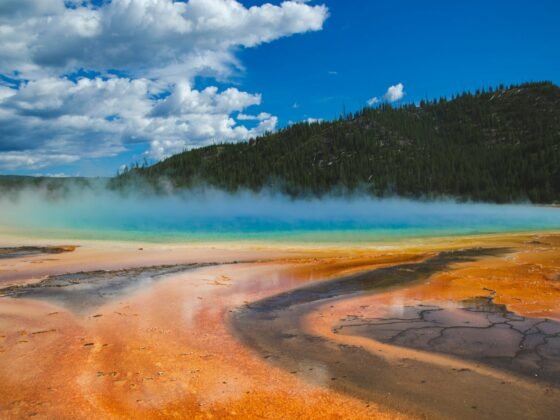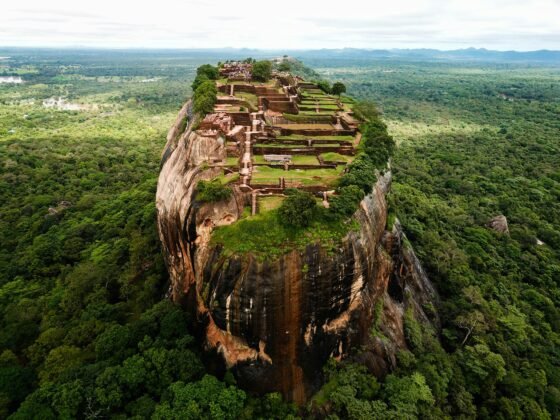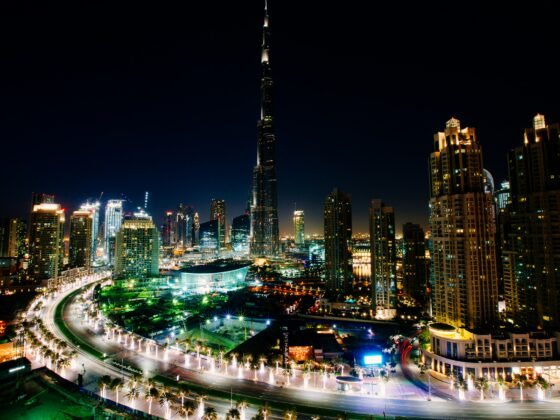It’s not a secret to anyone that one of America’s most fondly remembered novellists and one of the 20th century’s greatest authors was in love in Cuba, so much so that he spent much of his life in the island, residing in hotels at first and later buying his own residence here, where he would write and lock up his last ever manuscripts. If you want to follow in the steps of Nobel prize-winning Ernest Hemingway and relive his Cuban story, this article tells you all about his favourite haunts in the island, where he left an everlasting mark.
Following Ernest Hemingway’s trail in Cuba is not hard if you know where to look, even if you don’t there are plenty of locals happy to point you in the right direction. Cubans feel very proud of Papa Hemingway’s’ love affair with the island, and they have named several events and monuments after him, such as the annual marlin fishing and billfishing tournaments and the Marina Hemingway in Havana, but it also extends to special seafood dishes, cocktail concoctions especially prepared for his enjoyment and all sorts of nostalgic memorabilia.
Ernest Hemingway found Cuba so inspiring that he kept coming back time after time, living in Cuba on and off for long periods and writing seven books in the process, some of which depicted Cuba itself in some way or another, if not wholly, partly. His famous Pulitzer-prize winning, “The Old Man and the Sea” is said to have been inspired by Cuba’s sleepy fishing town of Cojimar, and its main character by one of his closest fishermen friends, Gregorio Fuentes, to whom he left his beloved boat Pilar.
But moving on to what matters, here I give you the definite guide how to enjoy the Cuba of Papa Hemingway, following his trail and taking in the island in as he once did. Although some of his favourite haunts might be too tourist-infested for anyone’s liking nowadays, others remain as remote and authentic as ever. In any case, they’re all obligatory stops if you want to immerse in Hemingway’s Cuba.
El Floridita
Most Hemingway routes start here for a reason, well, for quite a few in fact. It’s no secret to anyone that Ernest enjoyed his tipple, in fact alcohol featured prominently throughout his life, for better or for worse. And when in Havana there was this one bar he frequented to enjoy one of his favourite cocktails, the Cuban daiquiri, which he would not drink from any place other than right at its birthplace, El Floridita bar in Old Havana. If you visit today you’ll be able to peruse some photographs of Hemingway and his wife and friends (some of which include the Duke of Windsor, Tennesse Williams and Ava Gardner) enjoying a drink here. Indeed, Hemingway’s frequent visits to El Floridita have been well documented.
He was so fond of this elegant bar in fact, that its management decided to erect a bronze statue of Hemingway, leaning against the bar (and right in front of its favourite bar stool) in a life-like conversational mode. You can still find him here, with his welcoming smile, seemingly inviting you to join him for a drink or two and sip on the daiquiris which he described as having:
“…no taste of alcohol and felt, as you drank them, the way downhill glacier skiing feels running through powder snow.”
In his honour you can clink glasses and down a potent Papa Doble, a stronger, sugar-free version of the original daiquiri created just for Hemingway, given that he was diabetic and fond of potent concoctions.
La Bodeguita del Medio
And if he enjoyed his daiquiris in El Floridita, Hemingway had his mojitos at La Bodeguita del Medio, another nearby bar and the cradle of the mojito. In fact, on the bar’s wall you can find a framed Hemingway scribble that reads: “My mojito in La Bodeguita, My daiquiri in El Floridita”, although some sceptics debate whether this was Papa’s handwriting indeed or whether he enjoyed any mojitos here at all as no photographic evidence exists to confirm it and there’s no mention of this bar on any of his books or works. Regardless, the enigma remains and equally, no one can deny he was here at some point in time or another during his frequent and prolonged visits to the nearby Ambos Mundos hotel, where resided for long stretches while writing “For Whom the Bell Tolls”. In fact, La Bodeguita del Medio was far closer to Ambos Mundos than El Floridita was (just a hop away in fact) and knowing Hemingway and his love for indulging in pub crawls to soak in the spirit of a place, it’s highly probable he would have come across it sooner or later. As he once famously declared:
“Don’t bother with churches, government buildings or city squares. If you want to know about a culture, spend a night in its bars.”
Whether Hemingway enjoyed mojitos here or not, La Bodeguita is certainly an atmospheric haunt to visit. Nowadays it might be a bit too full of tourists for most people’s liking, but if you can find a more subdued time of day to visit, I highly encourage you to do so. Hemingway’s mementos hang on the wall in the form of black and white pictures, as do some photographs of other high-profile visitors who’ve enjoyed a few libations here. Plus, you can play detective and try your hand at verifying Hemingway’s original or forged handwriting. You be the judge!
Ambos Mundos Hotel
The first place Hemingway stumbled upon on his first trip to Cuba back in 1928, which was actually an incidental three-day layover on his way to Spain, the American novelist liked his stay at the chic Ambos Mundos Hotel so much that he would make it his recurring residence on subsequent trips to follow. He came back repeatedly over the course of the next decade and always chose a room at Ambos Mundos as his temporary Cuban abode before he ended up renting (and eventually buying) his Cuban home in Finca Vigia in 1940.
In the spring of 1939 Hemingway travelled to Cuba on his boat to escape the painful separation from his wife Pauline. He would set up base at his favourite Cuban hotel and live there for a long spell of time while he continued writing “For Whom the Bell Tolls”. His room has nowadays been converted into a mini museum, and while you can’t stay in it you can visit it for a fee of $2 CUC, the same amount of money Hemingway would pay at the time for an overnight stay. The walls of room 511, in the hotel’s fifth floor, are now adorned by framed photographs of the man himself, surrounding the famous mahogany desk with his original Remington typewriter, a few spread-out manuscripts and several old magazines. You can silently imagine him sitting here and typing his Pulitzer-prize winning novel.
Later, you can climb to the rooftop bar and enjoy a Hemingway special, a delicious lunch where fresh lobster is the king ingredient.
Finca Vigia
After nearly a decade living on and off in Cuba, it became evident to Ernest that a temporary residence at a hotel room would no longer do, especially when he wanted to put himself in a more remote and tranquil location, escaping the hustle and bustle of Havana’s lively heart. That’s when he and his partner at the time, Martha Gellhorn rented Finca Vigia (a name that loosely translates as Lookout Farm), and which comprised of a large chalet hilltop overlooking 15 acres of lush grounds. Located some 15 kilometres off the city centre in the town of San Francisco de Paula, Finca Vigia was to become Hemingway’s winter residence for the rest of his days. Only months after renting it he purchased the property for $12,500 in 1940 and spent many long holidays there with his last wife, Mary Welsh. It was here that he finished writing “For Whom the Bell Tolls” and it is said he bought the house with some of the first royalties he obtained from the book.
It was also here that Hemingway wrote his most famous, most highly acclaimed book, “The Old Man and The Sea”, inspired by the last place in our list, the nearby fishing town of Cojimar – but more on that later.
After his passing in 1961, Hemingway’s wife left the property in the hands of the Cuban government and in recent years, after careful refurbishment and curative work the house has reopened to the public as the Museo Ernest Hemingway. Everything has been left much in the same way as Hemingway had disposed during his time in the house, with every object carefully placed as if he had just been done with it, like the markings on the bathroom wall where Hemingway noted his daily weight, the laid-out china inviting guests to a tea, gin or vermouth and the unvariably cluttered desk, buried in magazines, papers and books, just as he used to keep it. To keep everything perfectly crystallised in time, you cannot actually set foot inside the house, but are allowed to view each room from the large exterior windows. You can also admire the pool where Hollywood actress Ava Gardner took a naked dip in and take a look at “Pilar”, Hemingway’s boat, docked in a wooden pavilion on what once was his tennis court.
After the tour is finished you are welcome to enjoy a sip on the rustic bar outside, where you can taste a freshly prepared rum cocktail made from local ingredients squeezed on the spot, and named after Hemingway, of course.
Fishing town of Cojimar
The last in our list is perhaps where Hemingway drew most, if not all, of his inspiration to write his most successful novel, “The Old Man and The Sea”, which would ultimately earn him the Nobel Prize Literature in
This sleepy, small and unassuming coastal town, six miles east of Havana is where Hemingway docked “Pilar”, the boat he named after his wife Pauline’s affectionate nickname. This was also the boat that, apart from being the vessel that conducted many of the author’s own fishing adventures, fed his imagination for the writing of the last novel to be published in his lifetime.
Nowadays Cojimar remains much as it was when Hemingway visited and embarked on fishing trips with his friend Gregorio Fuentes, which many experts say is the person who inspired the book’s main character of Santiago. Mr Fuentes claimed so himself during his lifetime and indeed Hemingway left Pilar to him upon his death. After reaching the grand old age of 104, Gregorio died and reduced the number of Hemingway friends still alive in the island.
Yet, La Terraza remains, the bar and restaurant where the American novelist frequently lunched and enjoyed a few sundowners after a hard day at sea. Whereas once this was a fishermen’s haunt, today this restaurant is mostly visited by tourists but a few locals keep the charm offensive alive.
Cojimar might not be the busy fishing hub it once was, yet this is one place in Cuba where the love for Hemingway is more palpable and breathable than anywhere. You’ll feel it too, especially if you’ve read “The Old Man and The Sea”. Upon the famous writer’s death, local fishermen donated brass fittings from their boats to melt them and make a sculpture of their beloved Papa. The resulting Hemingway bust now overlooks the water in a pensive, almost trance-like look that lets in on the writer’s eternal Cuban love affair.
A Cuban tale that hasn’t reached its end
This concludes our list of five places in Cuba to follow in Hemingway’s footsteps, and whilst the list might seem short, each of the places mentioned here were a big part of the author’s life at various points in time. After all, as Cuban writer, Enrique Cirules, once rightly pointed out:
“For more than 30 years Hemingway had permanent contact with Cuba—in other words, for two-thirds of his creative life.”
It seems Hemingway’s mark in the island has not finished imprinting yet, as announcements were recently made for the building of a new Hemingway Hotel in the aptly named Marina Hemingway Havana. The new 650-room luxury hotel has reportedly started construction in November 2016 with no details of when it will be ready to welcome guests. In the meantime, there are five alternative places in Cuba where you can lap up the ambience from which the author drew inspiration to write some of his finest novels.












